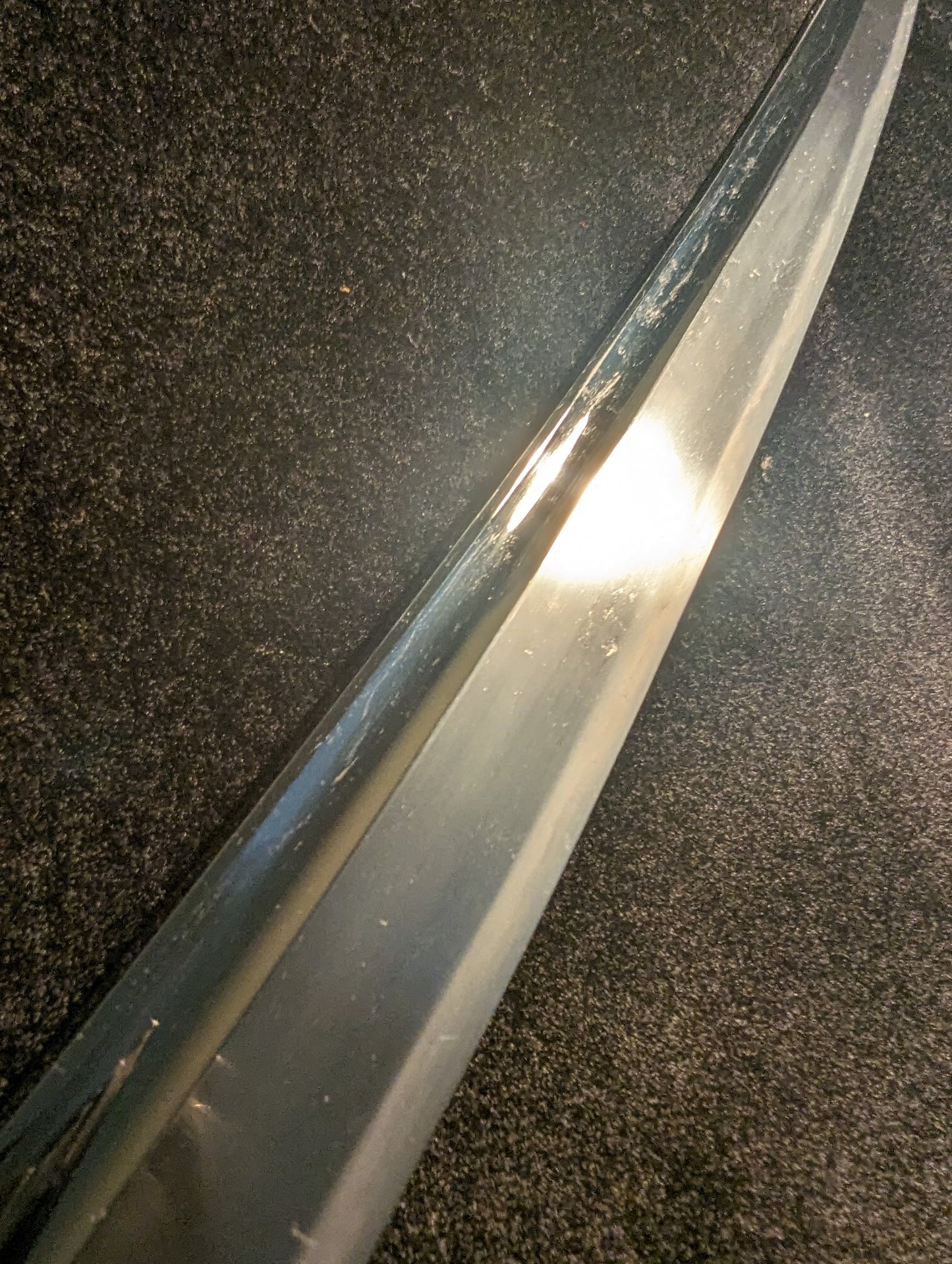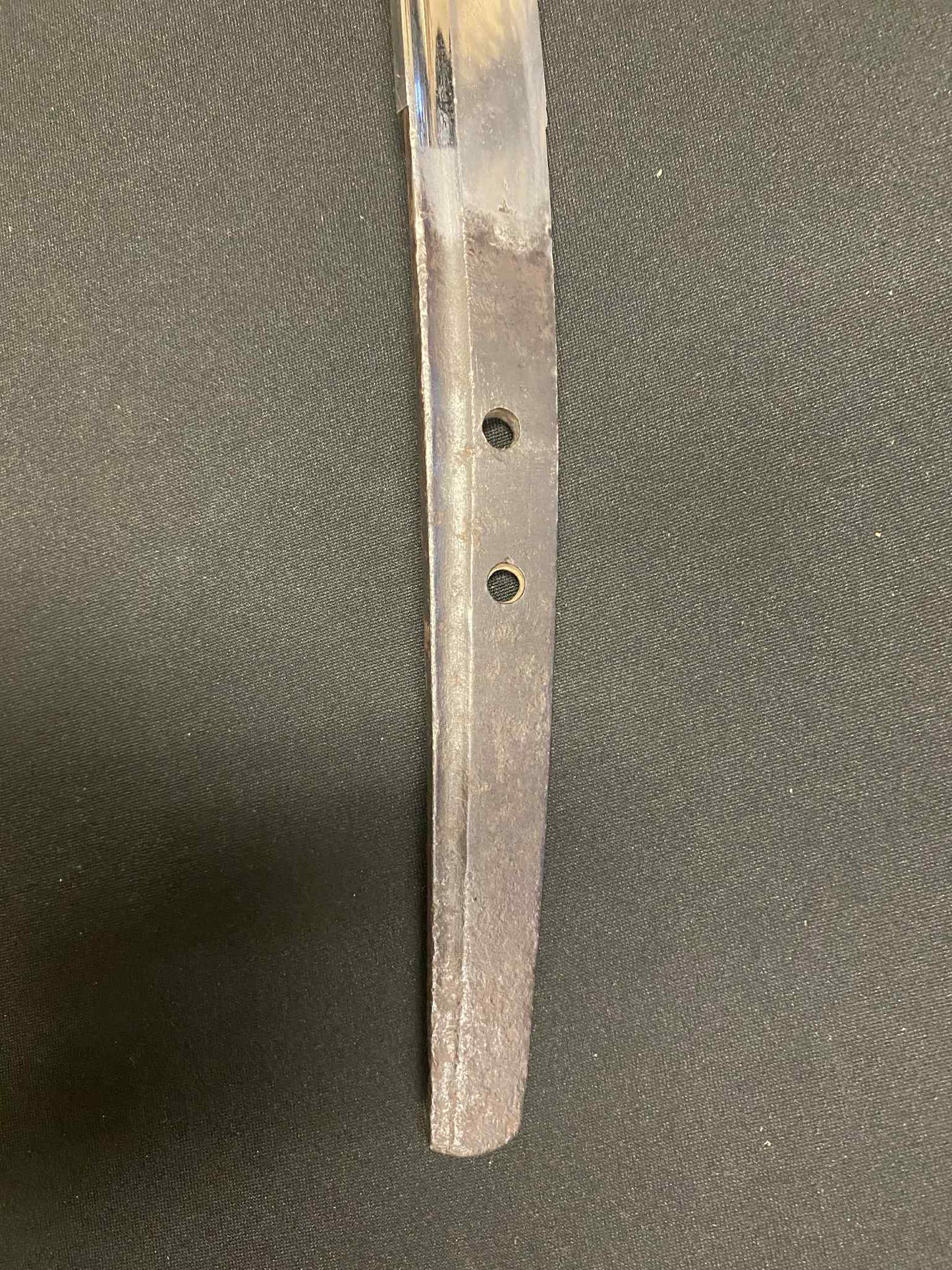Antique
Antique Nihonto - Tachi in Shirasaya with Katana Koshirae, Nanbokucho Period to Oei (650+ years old) - Unsigned, NBTHK Tokubetsy Hozon Attributed to Mihara Masanobu
Antique Nihonto - Tachi in Shirasaya with Katana Koshirae, Nanbokucho Period to Oei (650+ years old) - Unsigned, NBTHK Tokubetsy Hozon Attributed to Mihara Masanobu
This sword is attributed to Mihara Masanobu (三原正信), of the late Nanbokucho in Bingo Province (modern day Hiroshima). It is believed that Masanobu was the son of Mihara Masaie.
The Mihara school was founded by Kokubunji Sukekuni (国分寺助国) in the late Kamakura period (Late13th century-Early 14th century). Two of the most prominent figures in this school are Mihara Masaie (三原正家) and his son, Masahiro (正広).
Mihara school is divided into three categories in Japanese sword terminology depending on the period. When the blade is older than the Nanbokucho era(the 1300s), it is called *Ko-Mihara (Old Mihara). And it is called Mihara for those forged in the early-Mid Muromachi period. Finally, Sue-Mihara(Late Mihara) is used for the late Muromachi period. And, Masanobu is classified as a Ko-Mihara swordsmith.
Though far from the Yamato (now Nara) region, many of the temples there owned land in Bingo. They employed warriors to protect the temples, and many swordsmiths moved from the Yamato to Bingo. Therefore, Mihara swords feature some of the characteristics of Yamato.
Bingo is located near the Chugoku Mountains, where iron sands, one of the essential materials for making Japanese swords, were abundant. This geological location contributed to the Mihara swordsmiths forging high-quality refined blades.
PP
SPECIFICATIONS
Nagasa: 69cm
Sori: 1.5cm
Motohaba: 3.4cm
Total Length: 98.cm
SHIPPING, TERMS, AND REFUNDS
By placing an order with RVA Katana, the customer affirms they are a legal adult in their country of residence, and will comply with all local, state, and national laws regarding their order. Legacies of the East, Inc, DBA as RVA Katana shall be held blameless for any infraction of laws by the buyer.
US ORDERS
We make every attempt to ship within three business days by the customer’s preferred shipping method.
INTERNATIONAL ORDERS
Please note that the customer is responsible for understanding the import restrictions of their country, and that RVA Katana is not responsible for items seized in customs, or for swords that are not delivered for failure of the customer to pay customs, duties, or other carrier fees.
INCORRECT SHIPPING INFORMATION
If you accidentally enter an incorrect address, we are able to change it in our system free of charge before shipping. If you inform us after shipping, then we are not responsible for lost packages or return fees.
Release, Assumption of Risk, and Waiver of Liability and Indemnity Agreement:
Legacies of the East, Inc DBA RVA Katana does not warrant that a person or company may legally purchase, possess, or carry any and all items offered according to federal, state, or local laws. By purchasing any item Legacies of the East, Inc DBA RVA Katan, the buyer warrants that he is in compliance with all federal, local, and state laws and is legally able to purchase these items.
Returns
You may return any item unused within three days of receipt at your cost (we can provide a shipping label at reduced rates). After inspection of the returned item, we will refund you for the cost of said item, minus any shipping charges that we have covered.
After three days, a 20% restocking fee applies to any return.
Couldn't load pickup availability
Share






















































